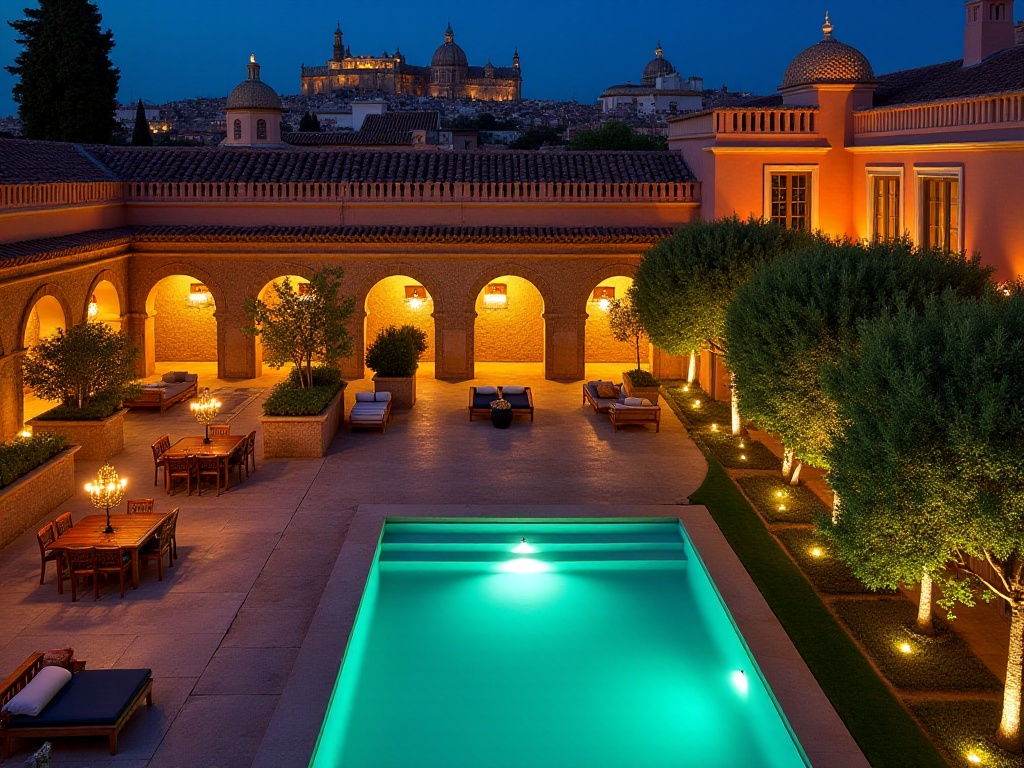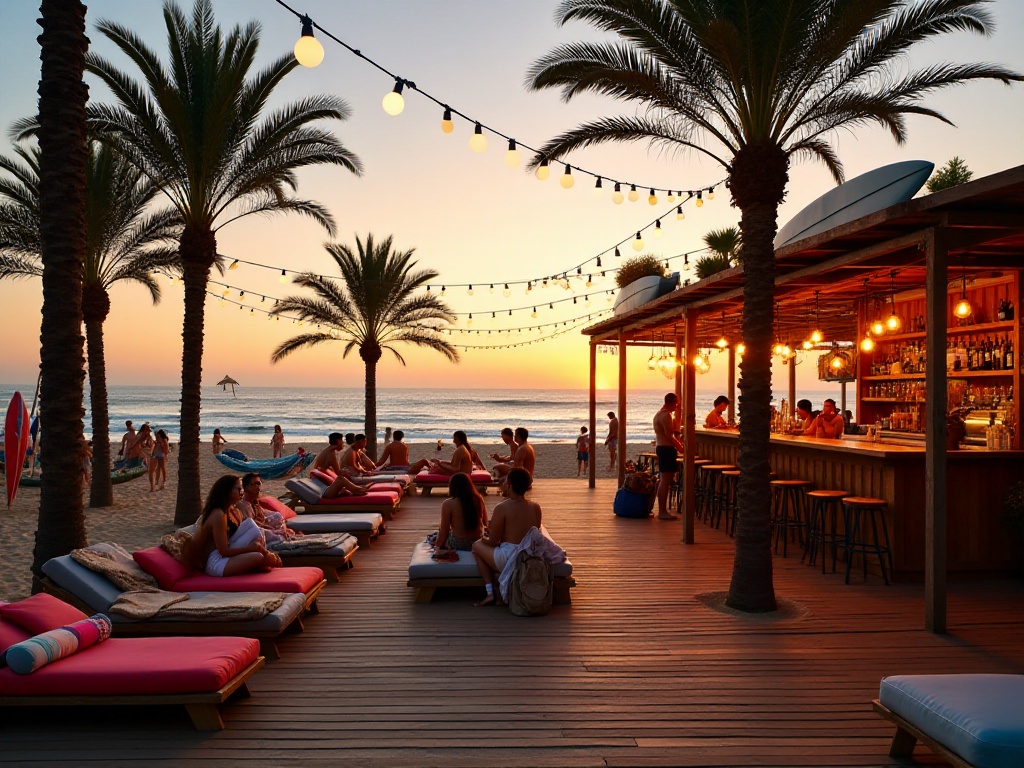Opening Thoughts
My first experience at a Berlin nightclub remains vivid in my memory. On that cold winter night, my friends and I stood in line at Berghain for nearly two hours in below-freezing temperatures. Watching person after person being turned away, we grew increasingly anxious. The security guard scrutinized everyone with a blank expression, like a museum curator selecting artworks. I wore a vintage biker jacket I had specifically chosen for the occasion, styled my hair to look slightly messy, trying to strike a balance between not looking too artificial or too casual. Standing at the entrance, I could hear my own heartbeat.
Over the years, I've visited nightclubs around the world. Each city has its unique nightlife culture, like vivid cultural guidebooks. From the raw and pure electronic beats in Berlin's basements to the neon-lit nights among Tokyo's skyscrapers, to the converted warehouse art spaces in Brooklyn, New York, each place has amazed me with the diversity of nightlife culture.
Berlin Nights
Berlin's nightlife is an endless feast. The city's club culture is deeply rooted in its historical soil. After the fall of the Berlin Wall, numerous abandoned industrial buildings provided perfect spaces for underground culture to flourish. Electronic music here isn't just a music form; it's a way of life.
Berghain undoubtedly represents Berlin's club culture. This converted East German power plant looks austere and mysterious from the outside. Its legendary status comes not only from its strict door policy but also from its unique atmosphere inside. I remember my first successful entry - the massive industrial space, the raw concrete textures, and the sound system that could be considered a work of art all left me in awe.
Beyond Berghain, Berlin has many clubs worth exploring. Tresor is also located in an abandoned building, its basement was once an East German vault, and the heavy vault door remains today. Watergate sits along the river, offering panoramic views of the Spree through its windows. KitKat Club is known for its open and inclusive atmosphere, with no rigid dress code but rather encouragement for people to express their true selves.
What makes Berlin's club culture most unique is its endurance. Parties here often last the entire weekend, some continuing from Friday night until Monday morning. This "marathon" party culture has fostered a unique way of socializing: people might meet at parties, experience sunrises and sunsets together, share food and stories, and ultimately become true friends.
The scale of the city's nightlife economy is astounding. Beyond ticket revenues, surrounding services like dining, accommodation, and transportation also benefit. More importantly, this thriving club culture has attracted numerous artists, musicians, and creative workers to settle in Berlin, further driving the city's creative industry development.

London Nights
London's nightlife is a kaleidoscope of brilliance. In this historic modern metropolis, tradition and avant-garde coexist harmoniously. Blues music flows gently in Soho's jazz bars; experimental electronic music shakes the converted warehouses in Shoreditch; champagne accompanies celebrities in Mayfair's upscale clubs.
Ministry of Sound's existence itself is legendary. When the club first opened, its founders spared no expense in bringing top sound system designers from New York to create the perfect acoustics. They even considered acoustic effects in the building's design, ensuring optimal sound experience in every corner. To this day, many DJs say performing here is a milestone in their career.
London's nightlife infrastructure is very well-developed. The introduction of night tube service has not only benefited club-goers but also night shift workers. Every weekend, you can see diverse crowds waiting at tube stations - healthcare workers finishing night shifts, musicians after performances, young people returning from parties - creating a unique urban night scene.
In recent years, London's nightlife districts have been expanding continuously. While people used to only think of the West End for London nightlife, East London's creative areas have also become hotspots. In Dalston, some old industrial areas have been transformed into artistic nightlife spaces. Under the abandoned railway arches in Hackney, many unique bars have opened.
Notably, London's nightclub security systems are highly professional. Most clubs are equipped with well-trained security personnel and generally use membership or advance ticket systems, making the nightlife experience safer and more controlled. Many clubs also have an "angel scheme" where people can discreetly signal staff for help if they're in trouble.
Tokyo Nights
Tokyo's nightlife is a carefully orchestrated audio-visual feast. In this city that never sleeps, each area has its unique nightlife characteristics. Shibuya's large entertainment venues buzz with activity, Golden Gai's small bars in Shinjuku are full of warmth, and Roppongi's upscale clubs showcase urban prosperity.
What impressed me most is the sense of order in Tokyo's nightclubs. Although laws strictly regulate operating hours, this has actually sparked more innovative entertainment forms. For instance, some venues start operating in the afternoon, hosting "nocturnal lunch parties"; others introduce "midnight session" concepts, offering special cultural activities between late night and dawn.
The Japanese attention to detail is fully displayed in club culture. From entrance lockers to dance floor air conditioning, from bathroom mirrors to bar coasters, every detail is carefully designed. Some high-end clubs even adjust music and lighting according to different time periods, creating progressive atmosphere changes.
Another feature is the prevalence of themed clubs. In Akihabara, you can find anime-themed clubs; in Shinjuku, venues specifically for rock music fans; in Shibuya, electronic music culture perfectly blends with street dance culture. This niche market operation style allows everyone to find their suitable entertainment space.
Security management is a highlight of Tokyo's nightlife. Police patrol regularly, transportation is convenient, and most areas are equipped with surveillance cameras. These measures allow people to enjoy nightlife worry-free. Meanwhile, Japan's unique "hotel culture" provides supporting services for nightlife, solving accommodation needs.

New York Never Sleeps
New York's nightlife is as vibrant and diverse as the city itself. Each area has its unique nightlife style: boutique clubs in downtown Manhattan display luxury and taste, warehouse parties in Brooklyn are full of artistic atmosphere, Latin dance halls in Queens are passionate and energetic, while jazz bars in the East Village maintain a vintage charm from the last century.
New York's club culture is deeply rooted in the city's artistic soil. Many famous clubs have close connections with the art world. For example, Output in Brooklyn regularly hosts experimental electronic music performances, while Le Bain in Manhattan is known for its rooftop art installations.
The city's late-night food culture is equally impressive. From high-end restaurants to street vendors, from traditional American to international cuisine, service is continuous. I particularly enjoy going to the 24-hour Ukrainian restaurant in the East Village with friends after parties, ordering hot borscht and discussing our experiences.
New York's public transportation system operates around the clock, providing great convenience for nightlife. Although subway frequency decreases late at night, it still ensures basic travel needs. Moreover, on-demand taxi and ride-sharing services ensure people don't have to worry about getting home.
Worth mentioning is New York's nightclub licensing system. Strict management ensures venue safety while also spawning unique underground cultural spaces. These temporary party venues often appear in art districts or industrial areas, adding a touch of mystery to the city's nightlife.
Shanghai Modern
Shanghai's nightlife is undergoing an unprecedented transformation. This international metropolis not only preserves traditional nightlife venues but continuously innovates, creating a unique modern club culture. High-end clubs on the Bund perfectly combine modern entertainment with historic buildings, while boutique bars in the former French Concession display a different charm.
Most impressive is Shanghai's innovation capacity. Many venues are experimenting with cross-border collaboration, such as combining with art exhibitions or introducing immersive experience elements. I once attended a party in a converted factory space where, besides music performances, there were art installations and interactive devices, making the entire night particularly memorable.
Shanghai's nightlife venues also have unique distribution. They mainly concentrate in commercial areas like West Nanjing Road, Huaihai Road, and Xintiandi, but are constantly expanding to surrounding areas. For example, in recent years, the creative park in Xuhui Riverside has become a new nightlife hotspot, with design-focused bars and clubs establishing themselves there.
The diversification of consumer groups is another feature of Shanghai's nightlife. From white-collar workers to artists, from locals to foreign tourists, each group can find suitable venues. Moreover, with the development of the night economy, supporting services are becoming increasingly comprehensive, with late-night restaurants, convenience stores, transportation services, and more readily available.
Worth mentioning is Shanghai's late-night dining culture. Many restaurants near nightclubs operate until late, offering diverse choices from local Shanghai cuisine to international foods. These places not only meet nightclub patrons' dining needs but have become an important part of nightlife.

Barcelona Passion
Barcelona's nightlife is a never-ending carnival. Residents of this Mediterranean city seem naturally adept at enjoying life, and nightlife takes this enjoyment to the extreme. Here, 10 PM is just the beginning of the day, as people start heading out and streets gradually become lively.
The beachfront club district is the essence of Barcelona's nightlife. From Port Olimpic to Barceloneta Beach, strings of lights adorn the coastline brilliantly. On summer weekends, sea breezes carry waves of music as people enjoy sunsets from terraces, waiting for nighttime revelry. Many clubs have outdoor areas, allowing partygoers to feel the sea breeze while dancing.
Las Ramblas is another nightlife hotspot. This famous pedestrian street transforms from a tourist paradise during the day to a bar street at night. The Gothic Quarter's alleyways hide countless unique bars, from traditional Spanish taverns to modern cocktail bars. I particularly love those bars built in medieval buildings, where ancient stone walls create interesting contrasts with modern music.
Barcelona's club culture emphasizes social interaction. People here love making new friends at parties, and language barriers aren't obstacles. Music and dance become bridges for communication - one dance can turn strangers into friends. Moreover, the party atmosphere is very relaxed and casual, without many dress code requirements, allowing people to completely relax and enjoy themselves.
Convenient transportation is another advantage of Barcelona's nightlife. The metro operates 24 hours on weekends, and there's a dedicated night bus network. Even during the busiest times, it's easy to travel between the city center and beach areas.

Amsterdam Experience
Amsterdam's nightlife reflects the city's inclusiveness and openness. Here, people from various cultural backgrounds gather together, creating a unique international atmosphere. From classical jazz bars along the canals to modern large-scale nightclubs, each venue has its unique charm.
Most impressive is Amsterdam's musical diversity. Besides traditional electronic music scenes, there are many experimental venues for emerging music styles. I once attended a world music party in a converted church where African percussion perfectly merged with electronic music, creating a unique auditory experience.
The city's nightlife management is very professional. The establishment of the "Night Mayor" position shows the government's emphasis on the night economy. They not only coordinate various interests but actively promote nightlife innovation. For example, some clubs regularly hold cultural exchange activities, combining parties with art and music education.
The canals add unique charm to Amsterdam's nightlife. Some venues are set on boats, gently rocking with the waves, offering a different party experience. In summer, there are even open-air parties along the canals, with people dancing between historic buildings until sunrise.
Worth mentioning are Amsterdam's nightlife safety measures. Most venues have professional security teams and special assistance mechanisms. Meanwhile, the city's extensive bike lanes and convenient public transportation provide safe travel options for nightlife.
Miami Heat Wave
Miami's nightlife is a luxurious visual feast. In this city full of Latin flavor, nightlife often combines tropical style with luxury elements. Top clubs in South Beach are not just party venues but symbols of status.
Most special is Miami's outdoor party culture. Thanks to the warm climate, many clubs have open-air areas. Here, you can admire the starry sky under palm trees while moving to the music. In summer, some beach clubs start operating in the afternoon, allowing people to gradually enter the party mood while sunbathing.
Miami club design often goes to extremes of luxury. Crystal chandeliers, mirrored walls, LED screen walls - every detail exudes opulence. Some clubs even have private VIP areas with dedicated butler service. Though expensive, the unique experience is worth trying.
Another feature of this city's nightlife is its high degree of internationalization. DJs from around the world frequently perform here, bringing the latest music trends. The fusion of Latin music and electronic music is particularly common here, creating a unique Miami style.
Regarding transportation, although Miami's public transit isn't as developed as other major cities, Uber and taxi services are very convenient. Many high-end clubs also offer valet parking, so guests don't have to worry about parking issues.

Ibiza Paradise
Ibiza is a paradise born for partying. This Mediterranean island transforms into the world's largest open-air dance floor in summer, where party lovers from around the world revel freely. The island's largest club, Privilege, is like a small city, with multiple themed rooms and outdoor areas besides the main dance floor.
Most memorable is the sunset party culture here. From afternoon, people gather at beach clubs, and as the sunset changes, music rhythms gradually speed up, reaching a climax when night falls completely. This experience from sunset to sunrise is uniquely Ibiza.
Each club on the island has its characteristics. Pacha is globally known for its cherry logo and is one of the birthplaces of electronic music culture; Amnesia's foam parties are classic; while Ushuaïa's open-air parties are unforgettable. Each venue has its loyal fans, with some people making pilgrimages specifically to the island.
In summer, the entire island seems to move with the music. From beaches to hilltops, from docks to the old town, music can be heard everywhere. Many world-top DJs have residencies here, bringing the best musical experiences to revelers.
Although tickets are expensive, the unique experience and atmosphere are worth it. Moreover, the island has many small parties and free beach parties, providing options for budget-conscious visitors.
Las Vegas Sparkle
Las Vegas nightlife is a never-ending show. In this desert city that never sleeps, nightclubs perfectly merge with casinos, creating unique entertainment experiences. Top clubs in large casino hotels not only offer music and dance floors but often hold special performances, making parties more spectacular.
Most attractive are the themed parties here. Different clubs have their special themes: some focus on electronic music, some on hip-hop, while others are known for live performances. Many clubs regularly invite famous artists for residencies, bringing unique experiences to guests.
Las Vegas club design is extremely luxurious. Some venues have huge LED screens, some are equipped with high-tech lighting systems, some even install special effects devices above dance floors. These facilities often cost tens of millions of dollars, but in this city known for luxury, this seems quite normal.
Another feature is the 24-hour operation concept. Some clubs hold pool parties in the afternoon, transitioning to indoor parties at night, allowing tourists to find entertainment all day. Moreover, supporting services are very comprehensive, from dining to accommodation, everything is available.
Worth mentioning is Las Vegas's VIP service. Booking VIP tables not only provides better views and private space but also includes dedicated server service. Although expensive, it's a worthwhile investment for those seeking the ultimate experience.

Final Thoughts
After experiencing so many cities' nightlife, I deeply appreciate that each place has its unique charm. Berlin taught me to appreciate raw electronic music culture, Tokyo showed me the balance between order and revelry, while Miami demonstrated the perfect combination of luxury and passion.
These experiences not only enriched my life but gave me a deeper understanding of different cultures. In nightclubs, music becomes a common language, and dance brings people closer together. No matter where you're from, you can find your own space here.
Nightlife has never been just simple entertainment; it's an important part of urban culture, a way for people to socialize and express themselves, and a manifestation of a city's vitality. Each city's nightlife tells its own story, and each of us can become part of that story.







